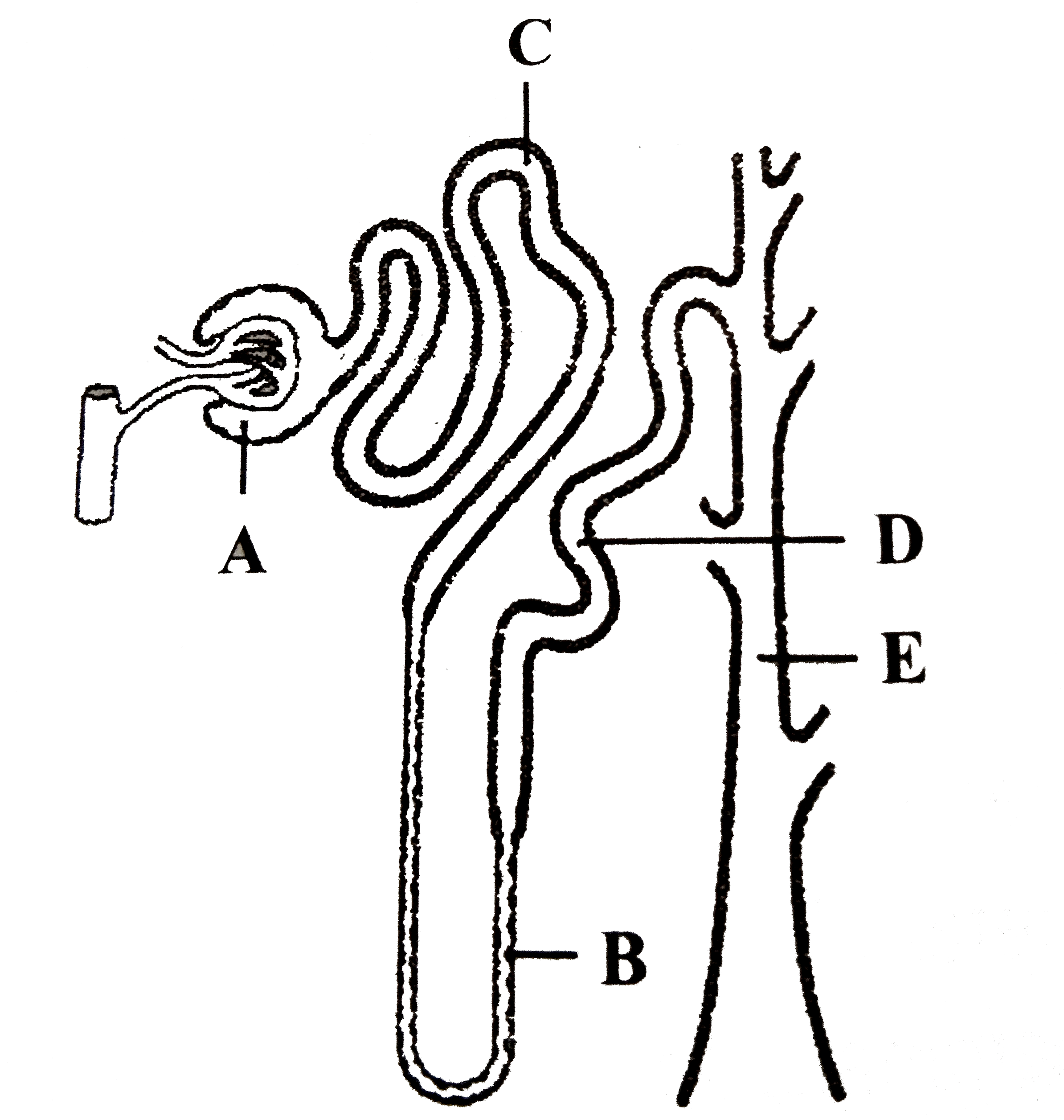A: The final reabsorption of water from urine into blood ocurs through the collecting duct of a mammalian nephron, resulting in the production of hyperosomotic urine.
R: The loop of Henle is responsible for the formation of a sodium gradient across the depth of the medullary intersitium of a mammalian kidney.
If both Assertion & Reason are true and the reason is the correct explanation of the assertin, then mark (1)
If both Assertion & Reason are true but the reason is not the correct explanation of the assertin, then mark (2)
If Assertion is true statement but Reason is false, then mark (3)
If both Assertin and Reason are false statements, then mark (4)
The correct Answer is:B
Step by step video, text & image solution for A: The final reabsorption of water from urine into blood ocurs through the collecting duct of a mammalian nephron, resulting in the production of hyperosomotic urine. R: The loop of Henle is responsible for the formation of a sodium gradient across the depth of the medullary intersitium of a mammalian kidney. by Biology experts to help you in doubts & scoring excellent marks in Class 12 exams.
Updated on:21/07/2023Topper's Solved these Questions
- EXCRETORY PRODUCTS AND THEIR ELIMINATIONBOOK - AAKASH INSTITUTECHAPTER - EXCRETORY PRODUCTS AND THEIR ELIMINATIONEXERCISE - SECTION C (PREVIOUS YEARS QUESTIONS)
46 Videos
- EVOLUTIONBOOK - AAKASH INSTITUTECHAPTER - EVOLUTIONEXERCISE - TRY YOURSELF
29 Videos
- HUMAN REPRODUCTIONBOOK - AAKASH INSTITUTECHAPTER - HUMAN REPRODUCTIONEXERCISE - Try Yourself
17 Videos
Similar Questions
Which of the following statements about the functioning of the kidney is CORRECT ?
I. On a average , 1100-1200 ml of blood is filtered by the kidneys per minute which constitute roughly 1/5th of the blood pumped out by both the Ventricles of the heart in a minute .
II. JGA is a special sensitive region formed by cellular modifications in the distal convoluted tubule and glomerulus at the location of their contact .
III. The ascending limb of Henle's loop is impermeable to water but allows transport of electrolytes.
IV. The collecting duct allows passage of small amounts of urea into the medullary interstitium to keep up the osmolality.
View Solution
The given figure represents a single nephron from a mammalian kidney. Identify the labelled parts, match them with the functions (i-iv) and select the correct option.
(i). The site of ultrafiltration.
(ii). Particularly sensitive to ADH.
(iii). The main site for the reabsorption of glucose and amino acids.
(iv). Largely responsible for the maintenance of blood pH.
View Solution
Knowledge Check
Statement-1: The final reabsorption of water from the urine into the blood occurs through the collecting duct of a mammalian nephron resulting in thhe production of hyperosmotic urine.
Statement-2: The loop of henle creates a sodium gradient in the interstitial fluid.Aboth statements 1 and 2 are correct.BStatement 1 is correct but statement 2 is incorrectCStatement 1 is incorrect but statement 2 is correctDBoth statements 1 and 2 are incorrect.Assertion. The final reabsorption of water from the urine into the blood occurs through the collecting duct of a mammalian nephron resulting in the production of hyperosmotic urine.
Reason. The loop of Henle creates a sodium gradient in the interstitial fluid from the renal medulla towards the renal cortex.AIf both A and R are true and R is the correct explanation of A.BIf both A and R are true but R is not the correct explanation of A.CIf A is true but R is false.DIf both A and R are false.Identify the correct statement (s) regarding the human kidney
I. It is responsible for the storage of nutrients such as glycogen
II. It concentrates the urine by actively transporting water from the filtrate.
III. It produces more dilute urine, when the collecting ducts become less permeable to water.
IV. The kidney gets rid of urea from the body by secreting it into the descending arm of the loop of Henle.
V. It responds to antidiuretic hormone by increasing urine output
VI. It reponds to atrial natiutetic factor by decreasing urinary excretion
VII. Kidney functions are controlled by negative feedback circuits involving ADH, RAAS and ANF.AII, IV and VBV and VICI, IV and VIDIII and VII
